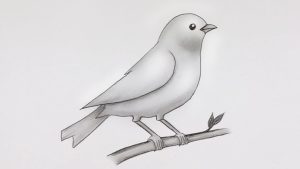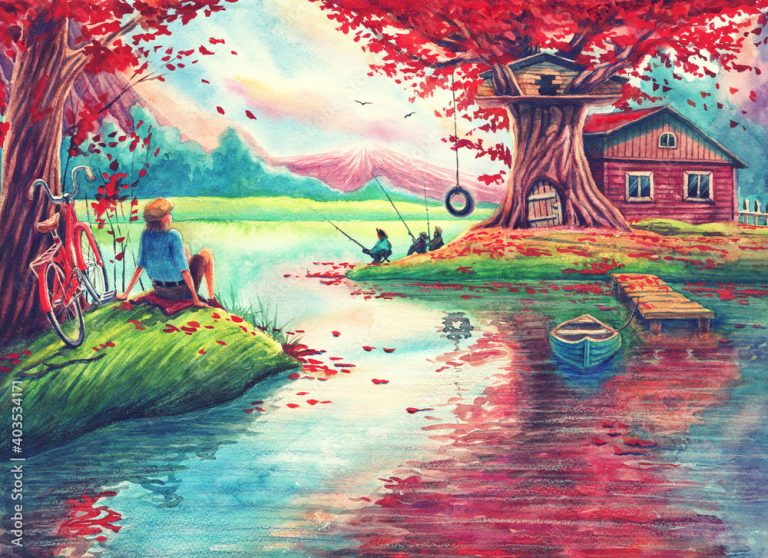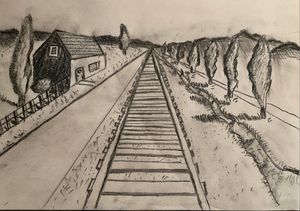Creating a bird drawing is a delightful artistic endeavor that allows you to capture the grace and beauty of these winged creatures on paper. Start by outlining the bird’s body, paying attention to its size and proportions. Consider the unique features of the species you’re drawing, whether it’s a songbird, a majestic eagle, or a colorful parrot.
- Capturing Expressions in Bird Drawings
- Creating Dynamic Poses for Your Bird Art
- Celebrating the Melodic Beauties in Your Drawing
- Conveying Movement and Grace in Your Artwork
- Exploring Exotic Birds in Your Art
- Illustrating Birds in Social Interaction
- Telling Stories Through Your Bird Art
- Frequently Asked Questions (FAQs)

Capturing Expressions in Bird Drawings
capturing the captivating expressions in your Bird Drawing! This can truly elevate your artwork, bringing these feathered friends to life and telling stories through their eyes and feathers. Here are some tips to unleash your inner avian expressionist:
1. Master the Bird Gaze:
- Eyes, the Windows to the Soul: Pay close attention to the shape, size, and pupil placement of the eyes. Wide eyes with dilated pupils convey alertness or fear, while narrowed eyes and relaxed pupils suggest calmness or contentment.
- Head Tilt and Posture: A tilted head can indicate curiosity, suspicion, or even playful interaction. A puffed-up chest and erect posture might show dominance or alarm, while a hunched posture and lowered head convey sadness or submission.
- Beak Position and Shape: An open beak can express readiness to sing, call, or eat, while a closed beak with a slight curve can depict contentment or even a mischievous smile. Predators like hawks might have a hooked beak clamped shut, ready to strike.
2. Body Language Tells a Story:
- Feather Fluffing: Ruffled feathers can indicate surprise, fear, or cold, while sleek feathers show calmness or readiness for flight. Raised neck feathers might suggest aggression or excitement.
- Wing and Tail Position: Spread wings might display dominance or territorial behavior, while tucked wings can show submission or sleepiness. A fanned tail could signal excitement or readiness to take off.
- Footwork and Movement: A perched bird with one foot tucked up might convey relaxation, while a hopping bird with raised feet suggests alertness or foraging. Mid-flight poses add dynamism and capture the essence of aerial acrobatics.
3. Embrace Details and Nuances:
- Species-Specific Traits: Learn the unique characteristics of different bird species. A crown of feathers on a blue jay signifies alertness, while a cockatoo’s crest might rise and fall depending on its mood.
- Color Cues: Some birds have vibrant facial markings or patches that change color with mood. For example, a robin’s red breast might become brighter during courtship.

Creating Dynamic Poses for Your Bird Art
Breathe life into your bird art by injecting dynamic poses! Bird Drawing birds won’t capture the captivating movement and grace of these feathered friends. Here are some tips to unleash your inner avian movement maestro:
1. Understand Anatomy and Flight Mechanics:
- Know Your Bones: Familiarize yourself with bird anatomy, especially wing and leg structure. This helps create poses that are anatomically realistic and visually appealing.
- Master the Wing Beat: Study different wing positions for various flight phases – take-off, soaring, flapping, gliding, and landing. Each has its own unique wing angle and body posture.
- Tail Feathers Add Flair: Don’t neglect the tail! Use its positioning and fanning to emphasize direction, braking, balance, and even emotions like surprise or contentment.
2. Capture the Essence of Movement:
- Freeze the Frame: Observe birds in action – in flight, perching, foraging, bathing, interacting with others. Freeze specific moments that showcase dynamic movement and tension in their poses.
- Exaggerate for Impact: While aiming for anatomical accuracy, don’t be afraid to exaggerate angles and wing positions slightly for artistic effect. This adds dynamism and drama to your artwork.
3. Embrace Different Composition Tools:
- Rule of Thirds: Place the bird off-center to create visual interest and dynamism. Imagine invisible thirds on your canvas and position the bird in one of the intersections or along the dividing lines.
- Leading Lines: Use branches, foliage, or even the bird’s gaze to lead the viewer’s eye and create a sense of movement within the composition.
- Negative Space: Utilize empty space effectively. An outstretched wing might fill one side of the canvas, while the other side remains empty, emphasizing the direction and speed of the bird’s flight.
4. Artistic Techniques for Dynamism:
- Pencil Precision: Use quick, decisive strokes to capture the fluidity of movement. Hatching and cross-hatching can add texture and emphasize muscle tension in wings and legs.
- Watercolor Flow: Embrace the unpredictable nature of watercolors! Layering and blending can create a blur of motion, perfect for capturing birds in flight or splashing in water.

Celebrating the Melodic Beauties in Your Drawing
transforming the fleeting beauty of songbirds into captivating Bird Drawing – a truly melodious artistic challenge! Here are some tips to capture the essence of these feathered musicians in your artwork:
1. Listen with Your Eyes:
- Study Bird Anatomy: Understand how their beaks, throats, and feathers are used for vocalization. This helps you depict specific postures and expressions while singing.
- Observe Songbird Behavior: Watch how birds move when singing – puffed chests, raised heads, open beaks, and even tail feathers vibrating to amplify sound. These subtle cues add life to your Bird Drawing.
- Capture the Sound Visually: Imagine the sound waves emanating from the bird. Use lines, swirls, or even abstract shapes to suggest the flow of melody and rhythm in your composition.
2. Let Feathers and Colors Sing:
- Species-Specific Plumage: Different bird species have unique patterns and colors that might change slightly while singing. A robin’s chest might become even brighter, while a bluebird’s feathers might ruffle to project the sound.
- Use Color to Evoke Emotions: Consider the mood of the song. Vibrant hues might depict a joyful melody, while softer tones could suggest a melancholic tune. Experiment with color gradients and washes to add depth and emotion.
3. Compose a Visual Symphony:
- Dynamic Poses: Don’t let your songbirds be static! Capture them mid-song, wings slightly spread, heads tilted, or perched on a branch with their bodies angled to project their melody.
- Negative Space as Melody: Utilize empty space around the bird to suggest the flow of sound waves or the vastness of the air carrying the song.
- Background Harmony: Consider the environment in which the bird sings. Lush greenery for a forest choir, open skies for a soaring lark, or even a cozy windowsill for a house sparrow’s serenade – let the background complement the songbird’s melody.
4. Artistic Interpretation:
- Pencil Precision: Use fine lines and cross-hatching to capture the intricate details of feathers and subtle changes in beak position while singing.
- Watercolor Flow: Experiment with washes and layering to depict the soft hues of plumage and the gentle flow of melody through colors.

Conveying Movement and Grace in Your Artwork
Bringing movement and grace to your artwork is not just about depicting action, but capturing the essence of fluidity, balance, and beauty in motion. Here are some tips to make your creations dance across the canvas:
1. Understand the Dynamics of Movement:
- Study Anatomy and Motion: Familiarize yourself with the underlying anatomy of your subject, whether it’s a human figure, animal, or even inanimate object. This helps you create poses that are realistic and convey a sense of flow and balance.
- Observe and Analyze: Watch how things move in real life – dancers, athletes, animals in their natural habitat, wind blowing through foliage. Analyze the rhythm, speed, and direction of the movement, paying attention to details like weight shifts, muscle tension, and limb extensions.
- Break Down the Action: Divide complex movements into smaller, key frames. This helps you capture the transition points and build a more dynamic composition.
2. Composition for Flow and Elegance:
- Leading Lines: Use lines within your composition to guide the viewer’s eye along the path of movement. This creates a sense of flow and keeps the gaze engaged.
- Rule of Thirds: Place your subject off-center on the canvas according to the rule of thirds. This creates a more dynamic and visually interesting composition.
- Negative Space is Active: Don’t neglect the empty space! Utilize it to emphasize the direction of movement and contribute to the overall balance of the composition.
3. Techniques to Capture Subtle Details:
- Pencil Precision: Use quick, flowing strokes to capture the fluidity of movement. Hatching and cross-hatching can add texture and emphasize muscle tension or the ripples of fabric in motion.
- Watercolor Wash: The unpredictable nature of watercolors can be your friend! Layer and blend washes to create soft transitions and suggest the blur of motion, perfect for flowing hair, fluttering wings, or rippling water.

Exploring Exotic Birds in Your Art
exotic birds! Their vibrant plumage, unique features, and captivating sounds offer endless inspiration for artists. Here are some tips to capture the magic of these feathered gems in your artwork:
1. Choose Your Muse:
- Dive into Diversity: Rainforests hold toucans with vibrant beaks, paradise birds with dazzling feathers, and hornbills with magnificent casques. Arid deserts boast ostriches, secretary birds, and crowned cranes with regal silhouettes. Explore different regions and ecosystems to find birds that spark your interest.
- Go Beyond the Obvious: Don’t limit yourself to the usual suspects! Consider the stunning lyrebird with its mimicry skills, the prehistoric-looking shoebill stork, or the enigmatic hoatzin with its dinosaur-like claws.
- Local Delights: Don’t overlook the exotic birds in your own backyard! Hummingbirds with iridescent feathers, kookaburras with their raucous laughter, and even common sparrows can be transformed into captivating subjects with the right artistic approach.
2. Research and Observe:
- Delve into Details: Learn about their habitats, behaviors, vocalizations, and unique features. Understanding their natural world and how they move, interact, and survive will enrich your artistic interpretation.
- Seek Visual References: Explore high-resolution photos, documentaries, and field guides to study their anatomy, color variations, and subtle details. Don’t be afraid to visit aviaries or zoos to observe them in person!
- Capture Their Essence: Focus on what makes them unique. Is it the toucan’s oversized beak, the hummingbird’s iridescent feathers, or the secretary bird’s long, graceful legs? Highlight these features in your artwork to make them stand out.
3. Artistic Interpretations:
- Realistic Rendition: Use precise techniques like pencil drawing or detailed watercolor washes to capture the intricate details of feathers, beaks, and eyes. This approach is perfect for scientific illustration or showcasing the raw beauty of these birds.
Illustrating Birds in Social Interaction
Absolutely! Capturing the fascinating social interactions of birds in your artwork can be a truly enriching experience, adding dynamism and storytelling to your creations. Here are some tips to bring these feathered societies to life, while keeping safety and ethical guidelines in mind:
1. Observe and Learn:
- Field Studies: Visit parks, bird feeders, or nature reserves to observe how birds interact in their natural environment. Watch how they flock together, form hierarchies, compete for resources, and even engage in playful chases or courtship displays.
- Document and Analyze: Take notes or sketches of their interactions, paying attention to body language, vocalizations, and spatial relationships. This helps you understand the dynamics of their social behavior and translate them into your artwork.
2. Compose Compelling Scenes:
- Dynamic Poses: Don’t depict birds just standing around! Show them interacting through specific postures – chasing each other in mid-flight, huddled together for warmth, or facing off in a territorial dispute. Dynamic poses add energy and tell a story through movement.
- Eye Contact and Communication: Pay attention to how birds use their eyes and body language to communicate with each other. A raised crest might signal aggression, while puffed-up feathers could indicate courtship behavior. Capture these subtle cues to add depth and emotion to your artwork.
- Negative Space and Composition: Utilize empty space creatively. Place birds in specific positions within the composition to guide the viewer’s eye and emphasize their interaction. For example, two birds facing each other in the center of the canvas instantly draw attention to their social exchange.
Telling Stories Through Your Bird Art
Transforming your bird art into captivating narratives is a beautiful way to deepen your artistic expression and connect with viewers on a deeper level. Here are some tips to weave engaging storylines into your feathered masterpieces:
1. Find Your Story Seed:
- Observe with a Storyteller’s Eye: Watch birds not just as individual creatures, but as characters in a larger unfolding drama. Are they facing a challenge? Building a nest? Battling for territory? Look for moments that spark your imagination and inspire a narrative arc.
- Draw Inspiration from Nature: Let the environment play a role! Is your bird soaring amidst a stormy sky, perched on a windswept branch, or navigating a lush rainforest canopy? The setting can add tension, foreshadowing, or a sense of wonder to your story.
2. Develop Your Feathered Characters:
- Go Beyond Species: Give your birds unique personalities, goals, and motivations. Is the robin a brave protector of its young? Is the owl a wise observer of the forest secrets? Develop distinct characteristics that drive the narrative forward.
- Body Language Speaks Volumes: Use postures, expressions, and interactions to tell your story without words. A hunched posture might convey fear, while a puffed-up chest could signal dominance. Let the birds’ physicality guide the narrative flow.
- Sequence and Climax: Think about the sequence of events within your story. Will you depict a single moment of tension, a character’s journey through a challenge, or even a complete mini-saga with a beginning, middle, and end? Plan the sequence to keep viewers engaged and build towards a satisfying climax.
Frequently Asked Questions (FAQs)
- Start with simple shapes: Begin by sketching basic shapes like circles, ovals, and rectangles to represent the head, torso, and limbs. This will help you build a foundation for your drawing before adding details.
- Pay attention to proportions: The proportions of a girl’s body are generally different from those of a boy. For example, the head is typically larger in proportion to the body, and the waist is narrower than the hips.
- Oversexualization: Avoid drawing girls in overtly suggestive poses or clothing. Focus on capturing their personality and individuality rather than their physical attributes.
- Clichés and stereotypes: Don’t fall into clichés like damsels in distress or overly bubbly princesses. Be creative and explore diverse representations of girls.
- Art books and tutorials: There are many great books and online tutorials available that can teach you how to draw girls in different styles. Look for resources specifically focused on female figure drawing or character design.
- Online communities: Join online communities or forums for artists who draw girls. This is a great way to get feedback on your work, learn from others, and stay inspired.




















